Continuing the countdown of my top 40 “Star Wars” comic stories, here are Nos. 20-11:
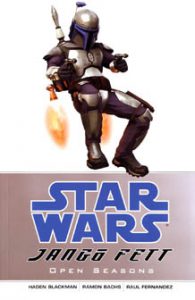
20. “Jango Fett: Open Seasons”
Four-issue series, 2002, Haden Blackman, Ramón F. Bachs
After “Episode II” seemed to contradict the Fett family backstory from the fan-favorite short story “Last One Standing: The Tale of Boba Fett,” Blackman works his retconning magic amid gorgeous art. Jango’s parents are killed by Death Watch, and the youth is taken in by Jaster Mereel, leader of the Mandos. Later, Count Dooku and Jango hash out the cloning deal. Dooku: “You want a son?” Jango: “No. An apprentice. He will become Jaster’s legacy.” So it makes sense that Boba would later use Jaster’s name as an alias. This is also the comic where we learn why Dooku leaves the Jedi Order. After a bloodbath on a snowy world, Dooku wonders “What have we done?”
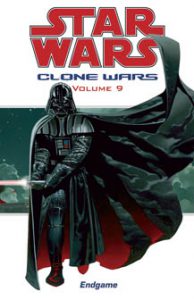
19. “The Hidden Enemy”
“Republic” Issues 81-83, 2006, John Ostrander, Jan Duursema
The Quinlan Vos saga’s final arc, which takes place concurrently with “Revenge of the Sith,” is steeped in fatalism. I had a lump in my throat seeing Luminara get gunned down, hearing the fateful news about Aayla and Bariss on Felucia, and seeing Quinlan flee his former soldiers into the Kashyyyk jungle Rambo-style. But there are uplifting moments to balance it out. Villie is in fine form – always doing things for money, but gradually beginning to consider Quin a friend until he saves Quin’s life. The young Wookiee who sees Villie as an uncle is a humorous touch. And Quin holding his baby on the final panel puts a satisfying bow on “Republic.”
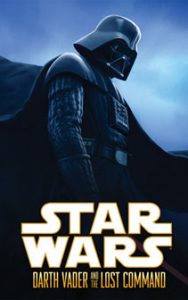
18. “Darth Vader and the Lost Command”
“Darth Vader” Issues 1-5, 2011, Haden Blackman, Rick Leonardi
This is the most daring of the several tales that take us into Vader’s twisted mind. “Lost Command” opens with strikingly contradictory images. Vader dreams of a life that could have been with Padme: They have a son named Jinn, and Anakin goes on missions wiping out the last of the Sith while Padme serves as supreme chancellor. Interspersing Vader’s visions with awesome panels of him fighting without his helmet, the pitch-black tragedy of the Dark Lord seeps into the reader’s psyche.
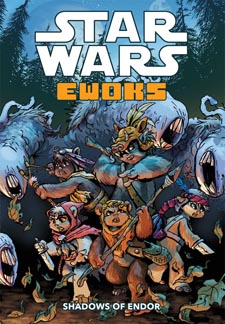
17. “Ewoks: Shadows of Endor”
Digest, 2013, Zack Giallongo
This love letter to the 1980s “Ewoks” cartoons and movies is a masterwork of continuity, as it fits into the convoluted timeline of “Ewoks” stories while reconciling the diverse portrayals of our beloved woodland fauna. For example, Teebo mostly has his movie look, whereas we recognize Latara (not seen in the movies) from the cartoon, but she’s roughed up just a bit so we can imagine this is what she would’ve looked like in movie form. Emphasizing the comic’s mature tone, the Dulok who leads the Ewoks to the site of the Imperial base is not a comic-relief coward. He’s manipulative and has a deep cultural dislike of Ewoks. This ain’t the child-friendly “Ewoks” where the Duloks wanted to steal the Ewoks’ magic soap.

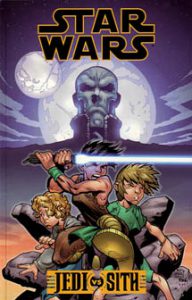
16. “Jedi vs. Sith”
Six-issue series, 2001, Darko Macan, Ramon F. Bachs
Because the main characters are three children, this parallel yarn to the first “Darth Bane” novel powerfully examines the horrors of war in the tradition of “Ender’s Game.” Without much sense of why wars happen, Tomcat, Bug and Rain are plucked off of their crappy mudball of Somov Rit by a Jedi Master. Bachs (along with inker Raul Fernandez and colorist Chris Blythe) deserves a lot of credit for the emotional impact, as he draws the kids with big eyes and tear-stained faces. Readers, along with Bug, see Tomcat’s and Rain’s downfall and feel helpless to stop it. Rain suspects killing is wrong, but admits to her new teacher, Bane, that she’s “still young.”

15. “Rite of Passage”
“Republic” Issues 42-45, 2002, John Ostrander, Jan Duursema
It’s cool how Aayla’s and Quinlan’s roles have flipped from “Darkness,” where Quin talked his student back from the brink of evil. Because of her lekku, which store memories, Aayla has overcome the memory-loss effects of the glitteryl she was poisoned with. But the glitteryl erased the memories of Quinlan, a member of the Kiffar species. Quinlan makes a good point: “Am I changed? I can’t tell. All beings change.” There’s a sadness to this arc because Aayla feels a bond with Quin that goes back to their childhoods, but from his perspective, she’s a stranger.
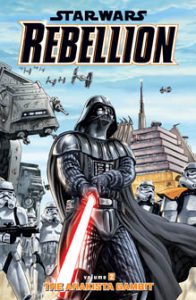
14. “The Ahakista Gambit”
“Rebellion” Issues 6-10, 2007, Brandon Badeaux and Rob Williams, Michel Lacombe
Usually, writers bring us into characters’ heads via narration, but in a neat twist, the evil information broker Raze communicates directly into the brain of his employee Wyl Tarson, who is also a Rebel double agent. It’s not easy to do “subtle” in a comic book, but Badeaux, Williams and Lacombe pull it off. Raze keeps reminding Wyl that he owns him — due to the bomb planted in his head — and he also exerts influence on Wyl’s love interest Laynara. Raze is served by handmaidens – whom he also abuses and perhaps literally owns as slaves – and on the last panel, we see one of them pull a dagger from a sheath. Good stuff.
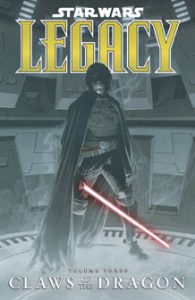
13. “Claws of the Dragon”
“Legacy” Issues 14-19, 2007-08, John Ostrander, Jan Duursema
Connections to the grander saga (the revelation of Darth Krayt’s identity traces all the way back to “Republic,” for example) enrich “Legacy” and push Cade Skywalker’s dark-side journey above its clichés. Plus, Cade is different from other Force-users who have taken this path because he does not seek to reshape the galaxy; he just wants to carve his own path. Krayt: “Don’t be a fool! If you jump, you die – and you doom the galaxy to chaos!” Cade: “The galaxy can look after itself.” After he escapes Krayt’s temple on Coruscant, Cade has a happy reunion with friend Jariah Syn and Zeltron girlfriend Deliah Blue. Ostrander earns the victorious moment after what had been a rather dark series up to this point.
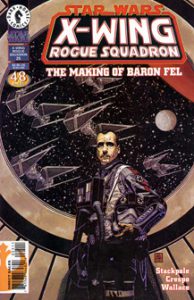
12. “The Making of Baron Fel”
“X-Wing: Rogue Squadron” Issue 25, 1997, Michael Stackpole, Steve Crespo
This double-length issue gives us the complete backstory of Imperial TIE fighter ace Baron Soontir Fel, along with a kicker of a final panel where he offers to join the Rebellion. Fel serves as a springboard for discussions about defecting from the Empire to the Rebellion, and because he is Wedge’s brother-in-law, he provides a “brother vs. brother” element to this part of the storyline reminiscent of Anakin and Obi-Wan.
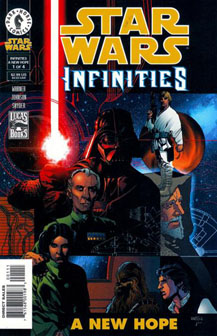
11. “Infinities: A New Hope”
Four-issue series, 2001, Chris Warner, Drew Johnson and Al Rio
In by far the best of the “What If?” trilogy, Warner throws a monkey wrench into the end of the film’s narrative when Luke’s proton torpedo explodes prematurely, failing to blow up the Death Star. Han and Luke escape, but Leia is taken prisoner. What follows is an epic story that includes five years (!) of Luke training on Dagobah, which is also time for Leia to be indoctrinated into the Empire and to convince herself that she can fix it from the inside. Warner blends humor and action like the films do, from Luke wryly telling Han “I figured you didn’t come all this way for Yoda’s stew,” to Yoda playfully manipulating Admiral Tarkin and using the Death Star (excuse me, “Justice Star”) to blow up Super Star Destroyers. But “Infinities: A New Hope” also delivers a robust, nuanced story that transcends its gimmick.
Coming tomorrow: The top 10.

